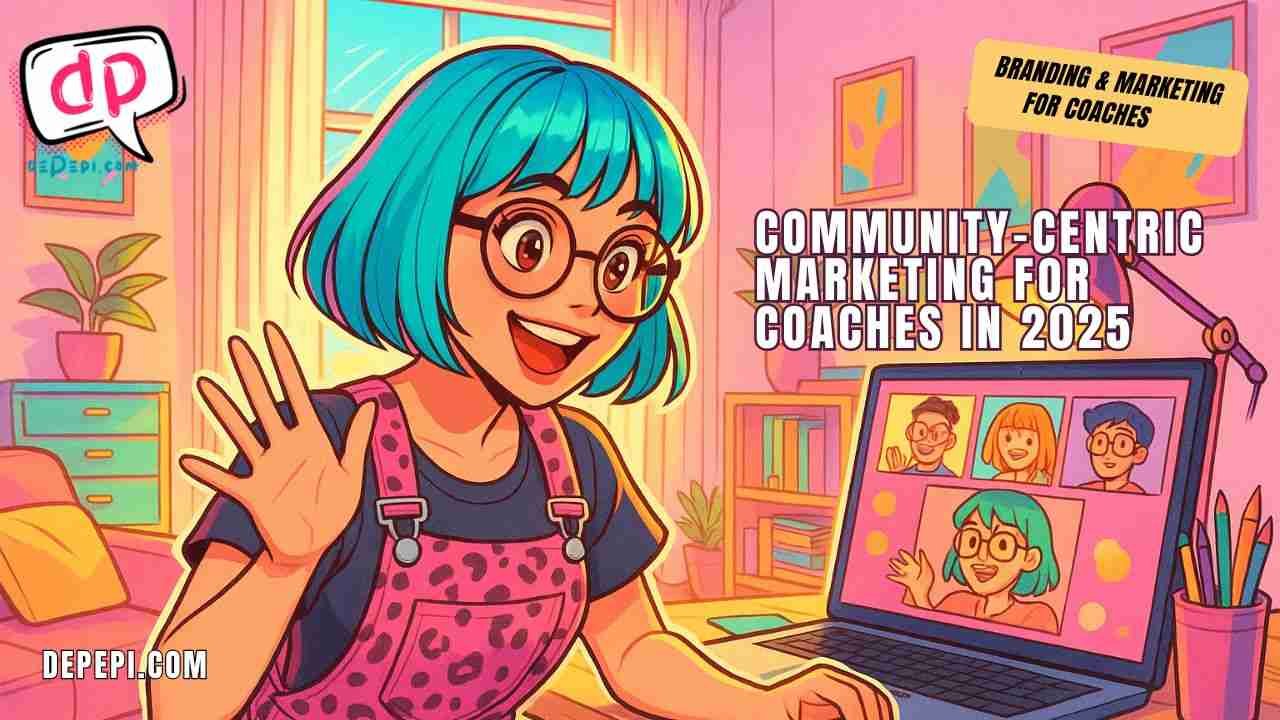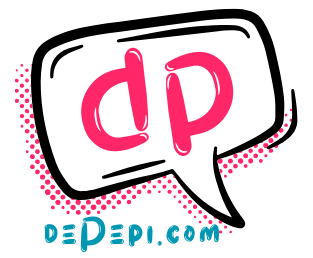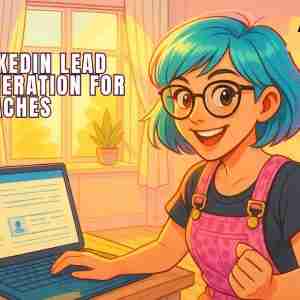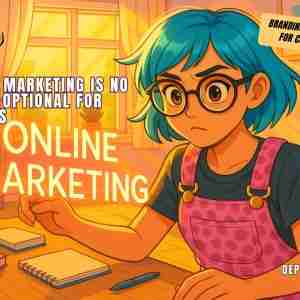Community-Centric Marketing for Coaches in 2025

The new battleground for coaches is the community-centric marketing on social media. Connection, not content, is the currency in 2025.
The rules of social media have changed. You’re already behind if you’re still treating platforms like Instagram, LinkedIn, or TikTok as digital megaphones to blast your content.
In 2025, social media isn’t about content first. It’s about community.
The landscape has shifted from distribution to connection, follower counts to participation, “look at me” to “talk with us.”
And if you’re a coach? This is both a challenge and your greatest opportunity.
Because coaching, at its core, is relational, transformational, and intimate. You don’t sell widgets—you sell space, trust, process, and presence.
So what happens when the algorithm starts rewarding exactly that?
The 2025 Shift: From Content Channels to Community Hubs
In 2018–2022, social media was about:
Building a big audience
Posting consistent content
Driving traffic to lead magnets or sales pages
Creators became brands. And these became influencers. Content was king.
But by 2023–2024, things started shifting. Hard.
Algorithms changed. Engagement dropped. And people got tired of polished, high-volume, one-way marketing.
And in 2025? We’re fully in the era of community-first media.
Platforms are rewarding:
Two-way conversations
User-generated content
Comments, not just likes
Shared spaces (groups, chats, co-hosting)
Experiences that feel collaborative, not transactional
The audience doesn’t want to watch. They want to participate.
And brands, coaches included, who refuse to adapt are quietly fading.
The Old Playbook: Content = Value
This was the dominant strategy for years:
Post consistently
Share value-driven content
Use strong CTAs
Nurture with email
Launch
It wasn’t bad. It worked. But it relied on you being the voice. The expert. The provider. The audience was the listener. The follower.
Now?
People don’t want to follow your content. They want to co-create your brand experience.
If your feed still looks like a billboard, no matter how beautiful, it’s going to underperform.
The New Playbook: Community = Brand Equity
Today, successful brands are:
Facilitating discussions
Inviting feedback
Uplifting client voices
Hosting conversations with, not just about their work
Creating spaces where their audience feels seen by each other, not just by the coach
And this isn’t theoretical. According to recent digital media trend reports:
According to a 2025 survey featured in Chain Store Age, 88% of brand leaders recognize the need to overhaul their customer engagement strategies—but only 32% feel confident in their ability to implement that change effectively (Chain Store Age, April 2025)..
Why? Because they’re still focused on metrics that made sense three years ago—impressions, reach, conversions. But community doesn’t scale the same way. It deepens.
What This Means for Coaches
If you’re a coach trying to grow your business in 2025, your job on social media is no longer to:
Just post tips and tricks
Just showcase testimonials
Just build a “personal brand” that looks the part
Your job is to:
Create connection-rich experiences
Facilitate dialogue, not just content drops
Empower your audience to interact with each other
Shift from “follower count” to member commitment
This doesn’t mean you stop sharing. It means your sharing becomes an invitation, not a broadcast.
Real Community vs “Strategic Authenticity”
“Authenticity” has become a strategy.
And community is becoming a performance.
In the rush to be “real,” many coaches are now:
Writing copy that sounds vulnerable, but isn’t truly honest
Posting behind-the-scenes for likes, not connection
Launching “communities” that are actually just glorified email lists
Creating comment pods, fake engagement, and “client stories” that are cherry-picked for optics
The illusion of connection isn’t connection.
Simulated community isn’t community.
You’re not ahead if you’re creating a community that’s just another funnel, with no space for voice, reciprocity, or belonging. You’re faking it. And your audience? They feel it.
What Real Community Requires
1. Decentralization of Voice
You’re not the only one speaking. Clients, collaborators, and even lurkers have space.
2. Space for Co-Creation
From comments to live chats to collaborative content you’re building with, not at people.
3. Ongoing Interaction (Not Just Launch Cycles)
You’re present beyond “cart open” weeks. There’s value without urgency.
4. Emotional Safety
Community isn’t just active; It’s emotionally intelligent. Members feel seen, not sold to.
5. Identity + Purpose
The community isn’t just around you. It’s around a shared mission or transformation.
Platforms Leading the Shift
Not all platforms are built for community. But some are leaning hard into it.
Substack Chat & Notes
Email-first but community-focused. Private DMs, threaded replies, and no algorithm. Ideal for small, thoughtful audiences.
LinkedIn (With Shifts in Tone)
It’s still a legacy, but it’s evolving. The platform rewards depth and group leadership, especially for niche communities and client-led discussions.
Instagram Broadcast Channels + DM Threads
Micro-community creation via private spaces. Great for behind-the-scenes access and member-only value drops.
Discord (if your audience skews younger or tech-savvy)
Fast-paced, decentralized, high-engagement. It requires strong moderation but builds culture fast.
How to Build a Community
Here’s how to reorient your brand now to stay relevant later:
1. Shift Your Content Mindset: From “Me” to “We”
Instead of: “Here’s my tip on boundaries.” Try: “How do you hold boundaries with family? I’ll share mine below—can’t wait to hear yours.” Make your posts a conversation starter, not a mic drop.
2. Use Your Comments Section As a Coaching Space
Engage meaningfully. Don’t just “like” replies; respond with curiosity, not automation.
3. Facilitate Peer Exchange
Invite members to share wins, questions, or insights. Feature clients. Host low-pressure meetups or threads.
4. Offer Community Access, Not Just 1:1
A high-value group space can be more appealing than private coaching if the vibe is right.
5. Let Your Brand Be a Host, Not Just a Voice
A community-centric coach is a facilitator, not just an authority. You make space, not just content.
The Benefits of Going Community-First
When done right, community-centered branding offers:
Higher engagement with less content
Client referrals and loyalty
Faster trust-building with lurkers
Organic testimonials and stories
A safer, less algorithm-dependent business model
Emotional sustainability (less shouting into the void)
Rich content inspiration (from conversations, not from pressure)
This is a rebalancing. Social media isn’t collapsing; it’s maturing.
But Let’s Not Pretend It’s Easy
Creating community is slow, messy, vulnerable, and labor-intensive. It requires emotional labor, moderation, active listening, and long-game thinking. You won’t get 10K followers overnight. You might grow slower. You’ll have to resist the dopamine hits of high-reach content and instead, double down on high-quality connection.
But the reward? A business rooted in relationships, not reach.
Want to Build a Real Community Around Your Brand?
Inside my course, Branding and Marketing for Coaches, we teach you how to:
Build audience trust through storytelling and invitation
Use social media as a relationship builder, not just a sales engine
Create content that sparks dialogue, not just likes
Set boundaries around visibility and participation
Branding and Marketing for Coaches (Life, Health, Wellness)
Use the coupon d0bb4481e2bbCOACH until June 26 @10:00 (UK time)
You Don’t Need More Attention. You Need More Belonging.
The future of coaching brands doesn’t belong to the loudest voice. It belongs to the deepest spaces. The ones that say:
“You’re not just a follower—you’re part of this.”
You can’t fake that. But you can design for it.
So be brave enough to let go of content addiction. Be bold enough to trust your people. And be wise enough to slow down and listen.






